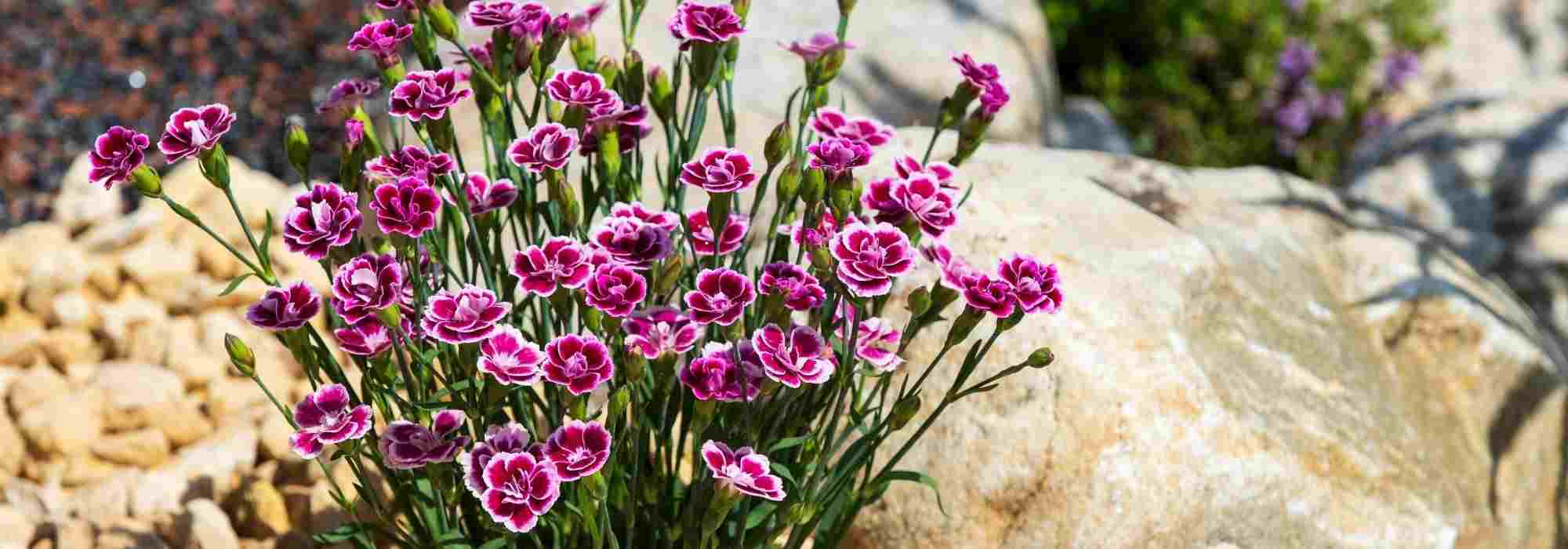
7 eyes for dry rockeries
Our favourite varieties!
Contents
The Carnation is the quintessential dry rockery plant. Thriving in sunlight and well-drained, calcareous soils, this perennial is very easy to cultivate and perfect for beginner gardeners. It scents slopes and rockeries with a spicy, sometimes sweet fragrance reminiscent of clove. Its flowers, which come in various forms from single to double, bloom from spring to late summer in colours that are both vibrant and soft. While some Carnations have a more upright habit, others have a more spreading habit that allows them to quickly colonise spaces. Here is a selection of 7 Dianthus to plant in dry soil and sunny locations.
Dianthus plumarius ‘Doris’: a soft touch of colour
The Dianthus ‘Doris’ offers an abundant flowering from May to July, and again in September. Its flowers, made up of 5 dentate petals in a beautiful light salmon pink with a darker base, exude an intense fragrance. This exceptional colour is quite rare among Carnations! Forming a dense cushion of fine, leathery grey-blue leaves, it finds its perfect place in a sunny rockery where it is very decorative. Perfectly hardy, Dianthus plumarius ‘Doris’ is an old variety that can be grown throughout France. This 30 cm perennial beautifully complements dry rockeries with soft hues alongside Geranium sanguineum striatum, Cerastium tomentosum columnae, Creeping Gypsophila ‘Rosa Schönheit’, and Centaurea bella.
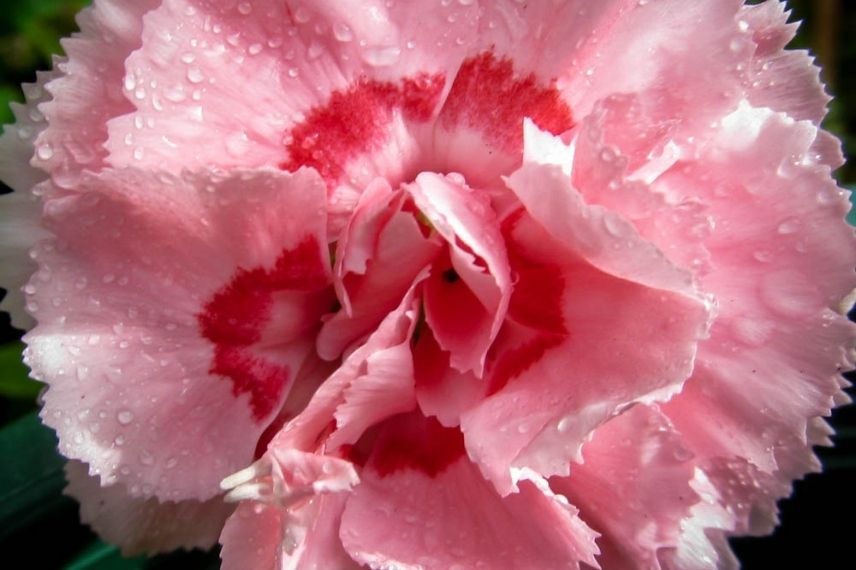
Dianthus ‘Doris’ (photo Jocelyn Kinghorn)
Read also
15 plants for a sunny rockeryDianthus gratianopolitanus 'Badenia': small, sturdy, and highly fragrant
Very small in size, the Dianthus gratianopolitanus ‘Badenia’ forms beautiful dense, grassy cushions. It is a reliable choice for flowering and adding colour to a dry rockery! This dwarf variety of Grenoble Pink, also known as Pentecost Pink or bluish Pink, develops a semi-evergreen blue-grey foliage, very linear and similar to lawn. This Pink does not exceed 15 cm in height at ripeness, but spreads quickly and easily to reach a width of 40 cm. Perched on short stems, its flowers of about 4 cm with a strong fragrance display a vibrant fuchsia red colour! The ‘Badenia’ Pink tolerates drought very well and is water-efficient. During the flowering period, which can last until October, regularly remove faded flowers to encourage the appearance of new flower buds. Plant this low perennial in full sun within a very colourful rockery composed of Iberis ‘Absolutely Amethyst’, Helianthemum ‘Orange Double’, Aubriètes ‘Kitte Bleu’ and ‘Red Carpet’, Phlox douglasii ‘Lilac Cloud’ and Erysimum ‘Zwerg Mango’.
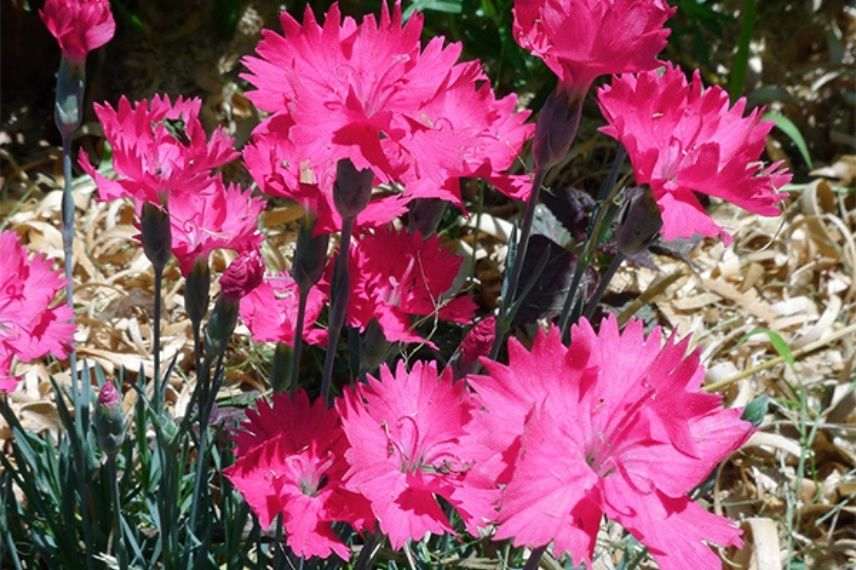
Dianthus gratianopolitanus ‘Badenia’
Discover other Dianthus - Pinks
View all →Available in 0 sizes
Available in 2 sizes
Available in 2 sizes
Available in 2 sizes
Available in 1 sizes
Available in 2 sizes
Available in 2 sizes
Available in 1 sizes
Available in 2 sizes
Available in 1 sizes
Dianthus plumarius ‘Gran’s Favourite’: delicately edged petals
An old variety from 1966 and awarded in England, the Dianthus plumarius ‘Gran’s Favourite’ remains highly valued for its charming bicolour flowering, vigour, and ease of cultivation. Highly fragrant, this cultivar offers us sublime white flowers, tinged with deep purple at their heart and along the edge of each petal. Its linear and glabrous foliage, inserted on flexible stems, forms a robust and compact grey-blue cushion measuring 30 cm in all directions. Its flowering is even more abundant in very sunny locations, allowing for the creation of many fragrant bouquets from June to August and sometimes even until September. Simple yet striking at the front of a rockery, these frilled flowers will be enhanced when surrounded by Thymus longicaulis, Sedum ‘Lemon Ball’, and Erodium chrysanthum.
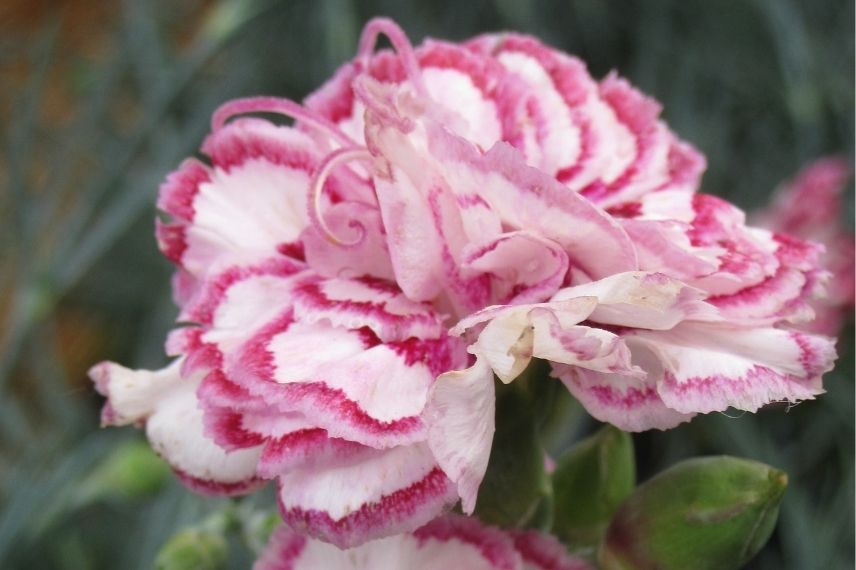
Dianthus plumarius ‘Gran’s Favourite’
Dianthus knappii: light and cheerfulness
The Knapp’s Pink is relatively unknown. It is one of the few Pinks that produces small, single yellow flowers. The Dianthus knappii, native to the Balkans, has light dark green evergreen foliage that gives it a soft, trailing appearance. Its light yellow flowers with purple undersides bloom from May to June on slender stems and may continue into July. This uniquely coloured plant is a little treasure for collector gardeners. Hardy to temperatures below -15°C, it has a long lifespan. This perennial requires only very well-drained, dry, poor, and stony soil, along with full sun exposure. In dry rockeries, Dianthus knappii pairs perfectly with Sedums, Artemisia stelleriana ‘Boughton Silver’ with its grey foliage, Alpine Aster ‘Goliath’, Basket of Gold with yellow flowers, and Coreopsis ‘Early Sunrise’.
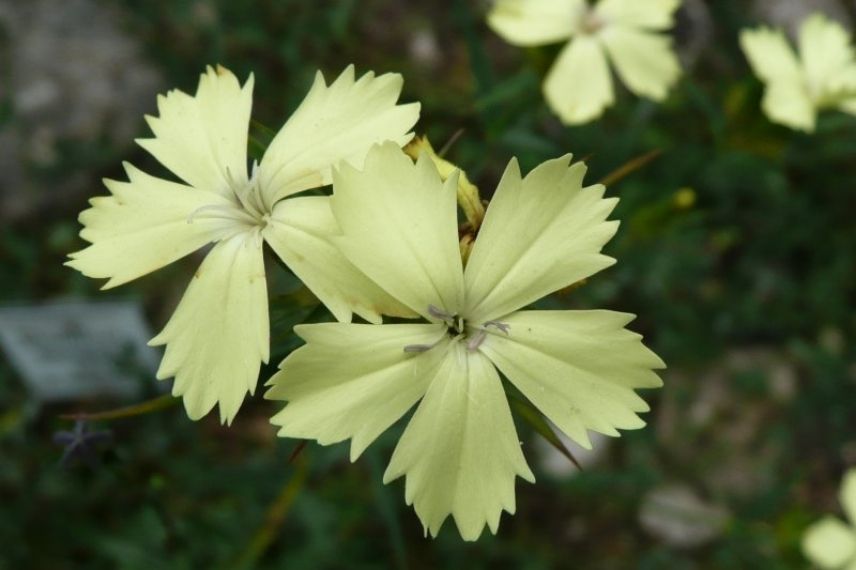
Dianthus knappii
Dianthus deltoides ‘Brilliant’: a splash of colour for rock gardens!
Dianthus deltoides ‘Brilliant’ stands out primarily for its vibrant flowering. From May to July, it energises rockeries with its numerous flowers featuring bright magenta dentate petals! Its evergreen leaves of a lovely green remain throughout the winter. Another advantage is its great hardiness. It can withstand temperatures below -15°C! Its low, creeping habit and rapid growth make it an excellent ornamental perennial for rockeries. This Heathland Carnation or Delta Pink thrives well in dry conditions and very sunny spots. The combination of this perennial with explosive colour alongside silver-leaved perennials and white flowers is particularly successful: Achillea crithmifolia, Arenaria montana, Lamb’s Ear, Lychnis coronaria ‘Alba’, and finally its red variety ‘Atrosanguinea’ which completes the rockery.
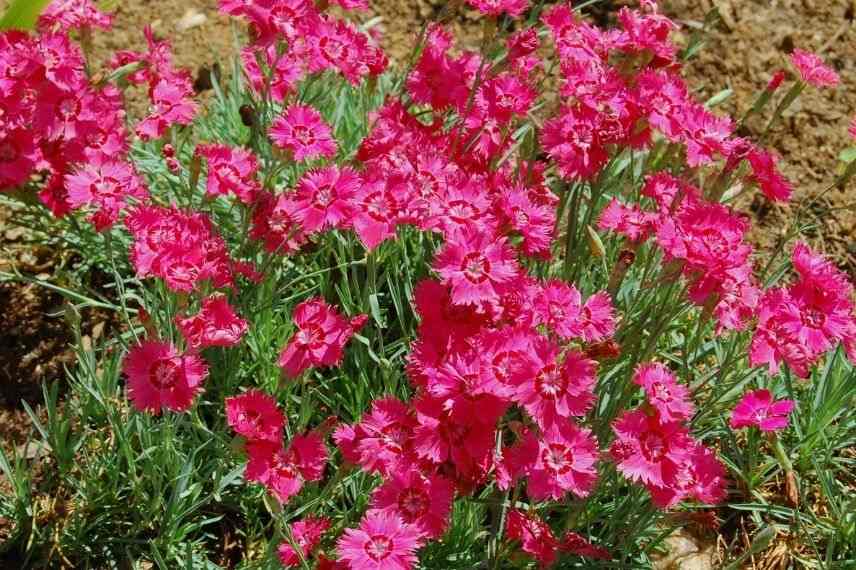
Dianthus deltoides ‘Brilliant’ (photo Mark Levisay)
Dianthus gratianopolitanus ‘Whatfield Gem’: frilly flowers
The Carnation Dianthus gratianopolitanus ‘Whatfield Gem’ stands out with its beautiful variegated and highly fragrant flowers from May to June! The light pink petals, speckled with red and white, form lovely double flowers about 4 cm across with a spicy scent. The Dianthus gratianopolitanus is a montane species also known as the Grenoble Carnation or Blue Carnation. This English cultivar ‘Whatfield Gem’, recently created, quickly forms a spreading cushion that can reach 15 cm in height and 40 cm in width. Very compact, this miniature Carnation thrives in full sun, adapts well to poor soils, and is also suitable for pot planting. With its semi-evergreen grey-blue leaves and variegated pink flowers, the Dianthus gratianopolitanus ‘Whatfield Gem’ can be paired with Erigeron karvinskianus, Saponaria ocymoides, Geranium sanguineum ‘Pink Pouffe’, and Sedum ‘Sunsparkler Lime Zinger’.
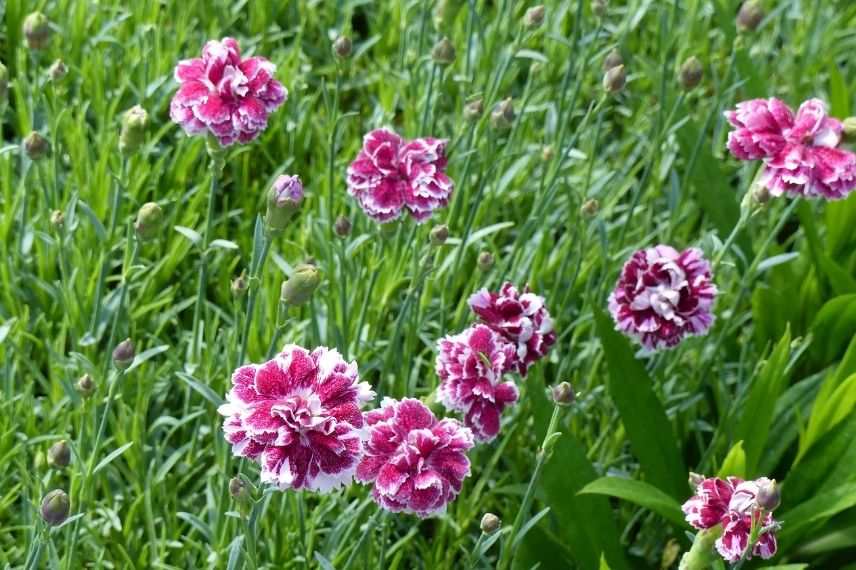
Dianthus gratianopolitanus ‘Whatfield Gem’
Dianthus plumarius ‘Lady in Red’: an elegant lady in red
Here’s a Carnation worth mentioning: the Dianthus plumarius ‘Lady in Red’! Not only is this Carnation one of the most fragrant in our collection, but it also dazzles with its vibrant red flowers. From May to August, large double pom-poms with fringed petals bloom at the tips of tall floral stems that can reach up to 45 cm in length. This charming Carnation is also decorative in winter with its dense, evergreen tuft of beautiful bluish-grey foliage. This variety is very hardy and floriferous, making it ideal for creating lovely bouquets. Note that this hardy perennial dislikes acidic and damp soils; it prefers a chalky, stony soil that promotes good drainage. Infuse your dry rockery with an exceptional, sweet and fragrant aroma by pairing Dianthus plumarius ‘Lady in Red’ with perennials that have white and mauve flowers: the Achillea ageratifolia, the White Prostrate Speedwell, Delosperma ‘Wheels of Wonder Violet’, and the Alpine Savory. Finally, the Herniaria glabra adds a touch of green.
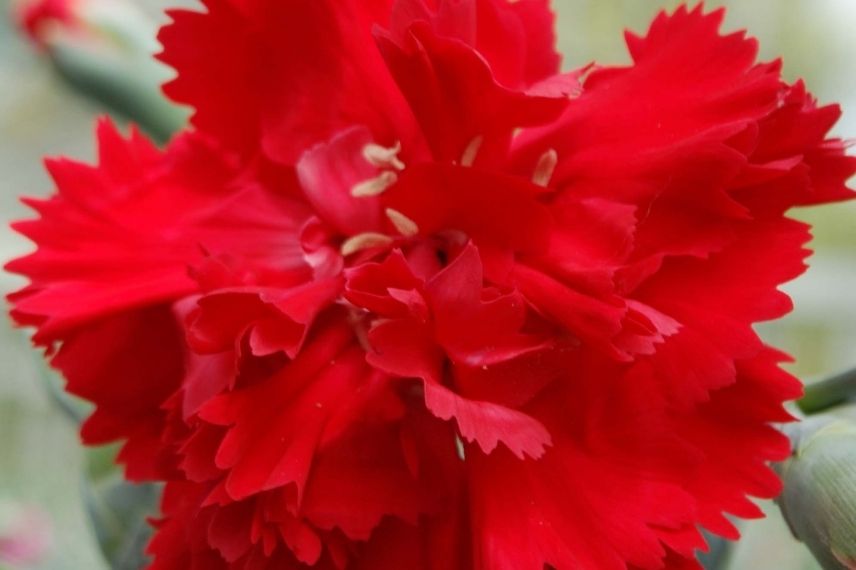
Dianthus plumarius ‘Lady in Red’
For further reading
For everything you need to know about Dianthus, discover our sheet Carnation: planting tips, maintenance, sowing.
Find our range of Carnations on our site.
Get pairing ideas for Carnation or Dianthus: 6 ideas for pairing in the garden.
Our selection of the most fragrant Carnations.
All our tips for propagating and sowing Carnations, properly planting the Carnation, and drying Carnations.
- Subscribe!
- Contents
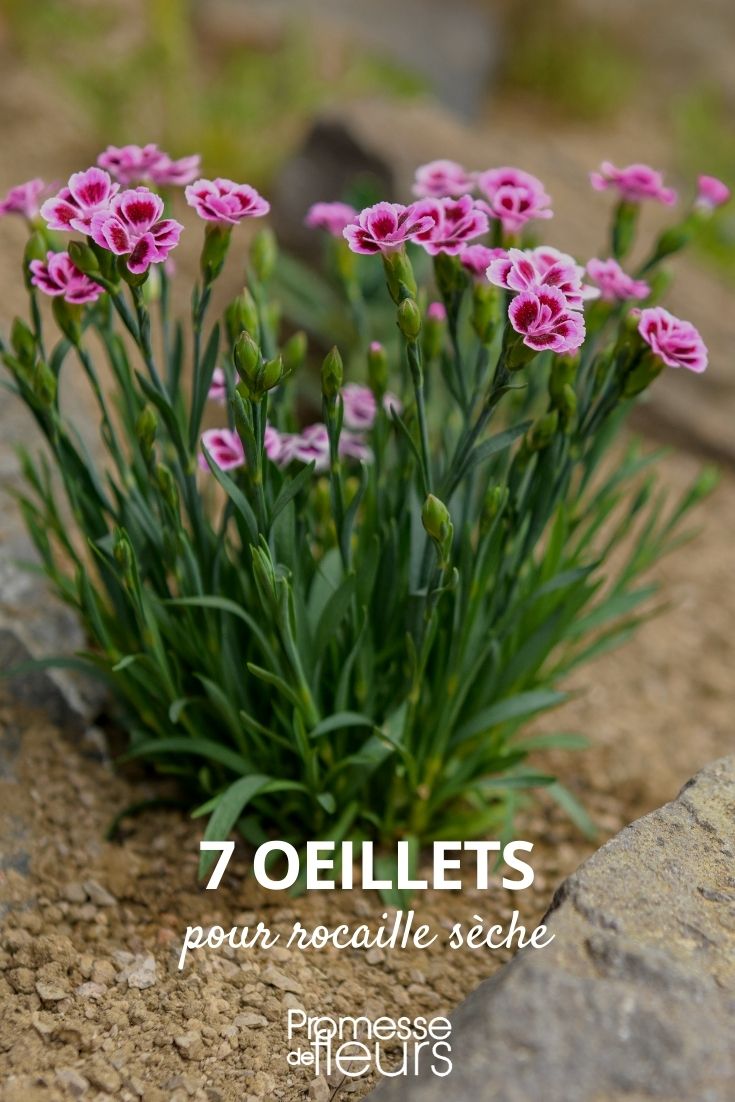































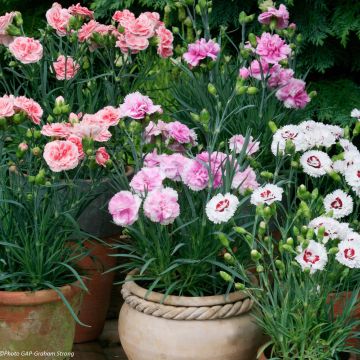
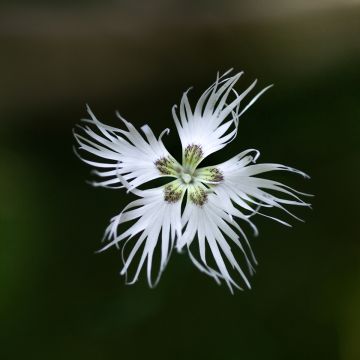
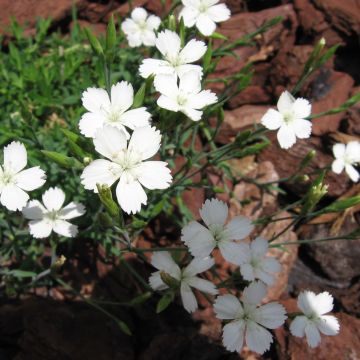
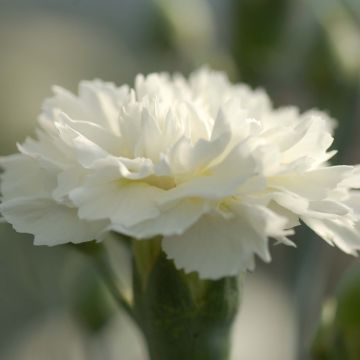
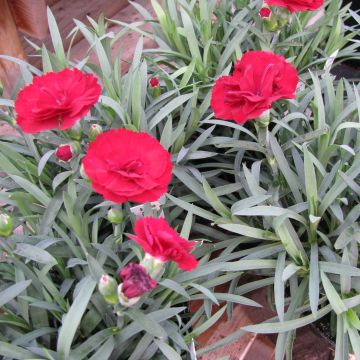
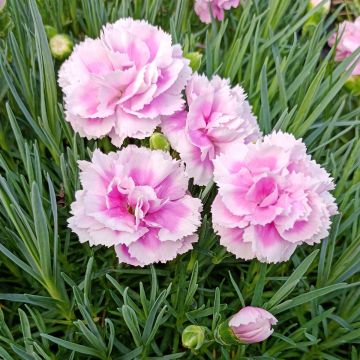
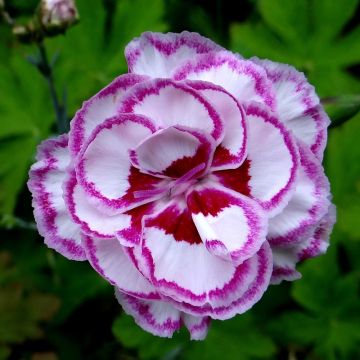
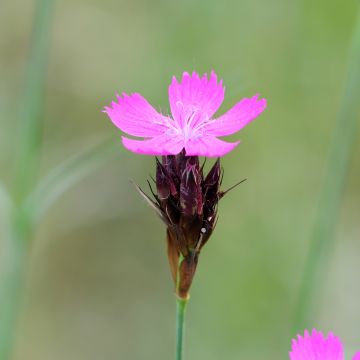
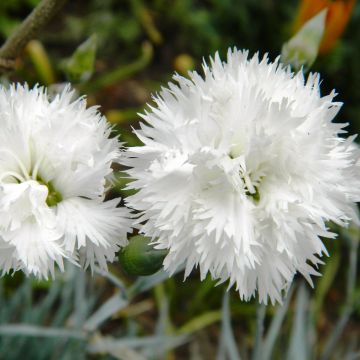
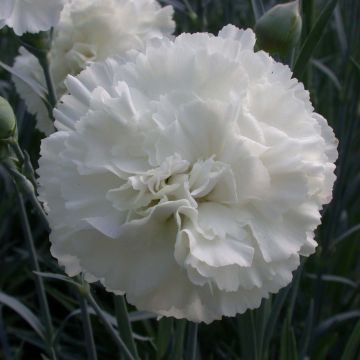
Comments